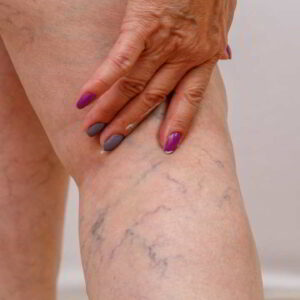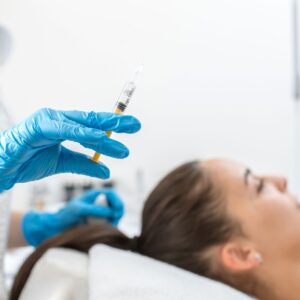In the dynamic landscape of regenerative medicine, induced pluripotent stem cells (iPSCs) have revolutionized the way researchers approach cell-based therapies and disease modeling. Among the most promising applications is the generation of neural crest cells, Schwann cells, and astrocytes—three critical cell types that play essential roles in the development and maintenance of the nervous system. Recent advances in differentiation protocols now allow for the efficient and reproducible production of these cells, opening new doors for therapeutic innovation and scientific discovery.
Neural Crest Cells: Versatile Architects of the Nervous System
Neural crest cells (NCCs) are a transient, multipotent population that emerge during early embryogenesis and contribute to a wide variety of tissues, including peripheral neurons, glial cells, melanocytes, and craniofacial structures. Their remarkable plasticity makes them a valuable target for developmental biology research and regenerative applications.
Modern differentiation techniques replicate key signaling pathways—such as SMAD inhibition and Wnt/BMP activation—to guide iPSCs through neuroectodermal induction and into the neural crest lineage. These protocols yield highly pure populations of NCCs, identifiable by markers like SOX10, HNK-1, and p75NTR. Once established, NCCs serve as a versatile intermediate for generating specialized cell types such as Schwann cells and peripheral neurons.
Schwann Cells: Myelin Engineers of the Peripheral Nervous System
Schwann cells are the principal glial cells of the peripheral nervous system, responsible for myelinating axons and supporting neuronal survival. Their regenerative capabilities make them a focal point in research on peripheral nerve injuries and neuropathies.
To generate Schwann cells from iPSCs, researchers typically begin with neural crest intermediates and expose them to a defined set of growth factors, including heregulin-1β, forskolin, and brain-derived neurotrophic factor (BDNF). These cues promote maturation into cells that express key markers such as S100β, MBP, and GFAP. Functionally, iPSC-derived Schwann cells demonstrate myelination capacity and neurotrophic support, making them ideal for drug screening and potential cell-based therapies.
Astrocytes: Multifunctional Glia of the Central Nervous System
Astrocytes are the most abundant glial cells in the central nervous system, playing crucial roles in synaptic regulation, blood-brain barrier maintenance, and neuroinflammation. They are increasingly recognized for their involvement in neurodegenerative diseases such as Alzheimer’s, Parkinson’s, and ALS.
Protocols for astrocyte differentiation typically involve a multi-step process: neuroectodermal induction, neural progenitor expansion, and glial lineage commitment. Through the use of small molecules and cytokines, researchers can generate mature astrocytes within 50–80 days. These cells express markers such as GFAP, S100β, and AQP4 and exhibit functional properties like glutamate uptake and cytokine secretion.
At Creative Biolabs, they provide end-to-end solutions for ectoderm differentiation, delivering highly defined, reproducible, and scalable protocols that meet the growing demand for human-origin research models.
Conclusion: Charting the Future of Neural Regeneration
By harnessing the developmental blueprint of neural differentiation, Creative Biolabs empowers researchers to generate high-quality neural crest cells, schwann cells, and astrocytes from iPSCs. These protocols not only enhance the understanding of nervous system biology but also accelerate the development of personalized therapies for neurological disorders. Whether you’re modeling disease or engineering regenerative solutions, iPSC-derived neural cells are the key to unlocking the future of neuroscience.
Recent advancements in stem cell research have spotlighted the transformative potential of induced pluripotent stem cells (iPSCs) in regenerative medicine and disease modeling. These unique cells, derived from somatic cells through reprogramming, exhibit qualities reminiscent of embryonic stem cells, including the ability to differentiate into any cell type in the body. To harness their full potential, researchers are employing three critical techniques: teratoma assays, karyotype analysis, and electrophysiological characterization. Together, these methods significantly enhance our understanding and application of iPSCs in therapeutic contexts.
Confirming Pluripotency with Teratoma Assays
One of the fundamental challenges in stem cell research is confirming the pluripotency of iPSCs. Teratoma assays emerge as indispensable tools in this regard. This technique involves injecting iPSCs into immunodeficient mice, leading to the formation of teratomas—tumor-like structures that contain tissues representing all three germ layers: ectoderm, mesoderm, and endoderm. The successful formation of these tissues serves as compelling evidence of the iPSCs’ ability to differentiate into various cell types, thus affirming their pluripotent nature. By rigorously assessing the potential of iPSCs to form teratomas, researchers ensure that only those cells that meet the pluripotency criteria are considered for further therapeutic applications.
Maintaining Genetic Stability with Karyotype Analysis
Another pivotal technique in stem cell research is karyotype analysis, which plays a crucial role in maintaining the genetic integrity of iPSCs. Karyotype analysis involves thorough examination of the chromosomes of iPSCs, allowing researchers to detect any genetic abnormalities that could compromise their functionality. Genetic stability is paramount for the safe application of iPSCs in clinical settings, as chromosomal abnormalities can lead to unwanted complications, including tumorigenesis. By performing regular karyotype analysis throughout the development and differentiation processes, scientists can monitor and maintain genomic integrity, thus paving the way for safer clinical applications.
Understanding Neuronal Function with Electrophysiological Characterization
Beyond morphology and genetic stability, the functionality of iPSC-derived cells is of immense significance, particularly in the context of neural applications. Electrophysiological characterization provides invaluable insights into the electrical properties and functional behavior of iPSC-derived neurons. By measuring parameters such as membrane potential and action potentials, researchers gain a deeper understanding of neuronal behavior and connectivity. This information is critical for modeling neurological diseases and assessing potential treatments effectively. Furthermore, the advent of high-throughput methodologies, including automated patch clamps and high-density microelectrode arrays, allows for detailed and systematic analysis of electrical activity within populations of iPSC-derived neurons, enhancing the reliability of the results.
Combining Techniques for Comprehensive Assessment
The integration of teratoma assays, karyotype analysis, and electrophysiological characterization establishes a comprehensive framework for assessing the quality and therapeutic potential of iPSCs. Each technique contributes a unique perspective, ensuring that the cells are not only pluripotent but also genetically stable and functionally competent. This systematic evaluation is vital in advancing iPSCs’ applications in regenerative medicine and disease modeling, as it fosters confidence in the data that guide clinical decision-making.
Implications for Future Research
In conclusion, the strategic integration of teratoma assays, karyotype analysis, and electrophysiological characterization signifies a pivotal advancement in preclinical stem cell research. The collective insights derived from these techniques provide a robust framework for evaluating iPSCs, essential for their successful transition from laboratory to clinical practice. As research continues to evolve, the application of these methods will undoubtedly be instrumental in developing innovative therapies for a multitude of diseases.





